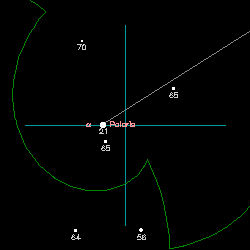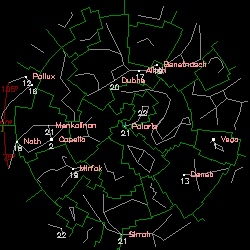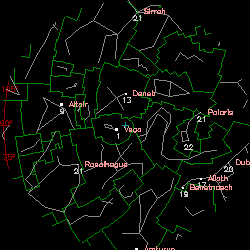|
The gravitational pulls of the Sun and the Moon on the Earth's equatorial bulge causes the Earth's axis to sweep out, ecliptic plane ("lunisolar precession").  Globe from Wikipedia, the free encyclopedia A consequence of the precession of the Earth's axis is that the celestial polestrace out circles in the sky over 25800 years. About 13000 years from now, the nearest bright star to the north celestial pole will be Vega rather than polaris. Polaris will reach the point at which it comes closest to aligning with the North Pole axis of our Earth in the year A.D. 2102, computed by my Precession and Proper Motion Applet 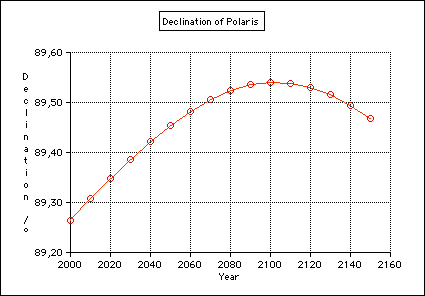
|
|||||||||||||||||||
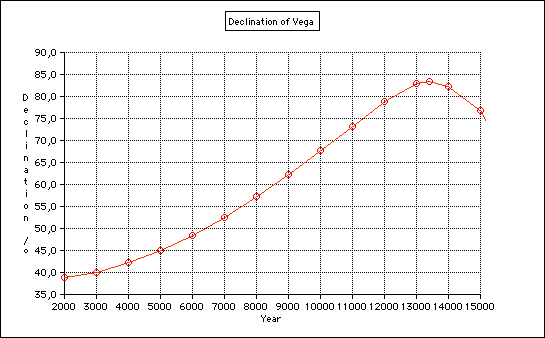
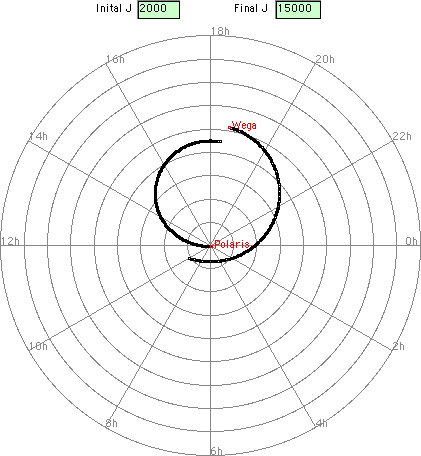
Precession from J2000 to J3000:

Image by my Sky Precession Applet
Change of RA in seconds from 2000 to 2010:
|
|
|
|
|
|
|
|
|
|
|
|
|
|
|
|
|
|
|
|
|
|
|
|
|
|
|
|
|
|
|
|
|
|
|
|
|
|
|
|
|
|
|
|
|
|
|
|
|
|
|
|
|
|
|
|
|
|
|
|
|
|
|
|
|
|
|
|
|
|
|
|
|
|
|
|
|
|
|
|
|
|
|
|
|
|
|
|
|
|
|
|
|
|
|
|
|
|
|
|
|
|
|
|
|
|
|
|
|
|
|
|
|
|
|
|
|
|
|
|
|
|
|
|
|
|
|
|
|
|
|
|
|
|
|
|
|
|
|
|
|
|
|
|
|
|
|
|
|
|
Change of declination from 2000 to 2010:
|
|
|
|
|
|
|
|
|
|
|
|
|
|
|
|
|
|
|
|
|
|
|
|
|
-1'40'' |
|
|
|
|
|
|
|
Changes of Celestial Coordinates Demonstration der Präzession (Animation) Precession (From Wikipedia, the free encyclopedia)
|
© 2003-2004 J. Giesen
Updated: 2003 Sep 28

